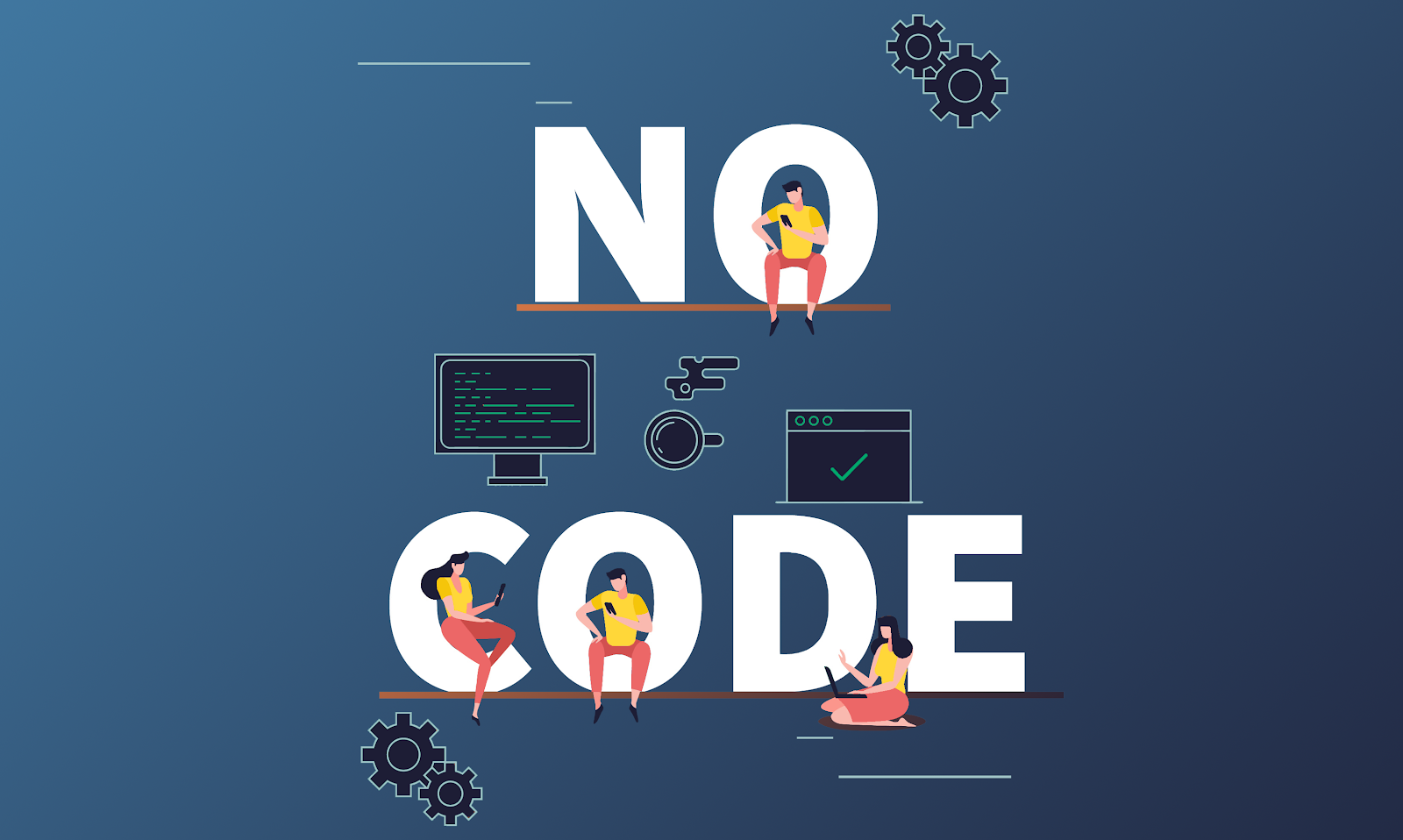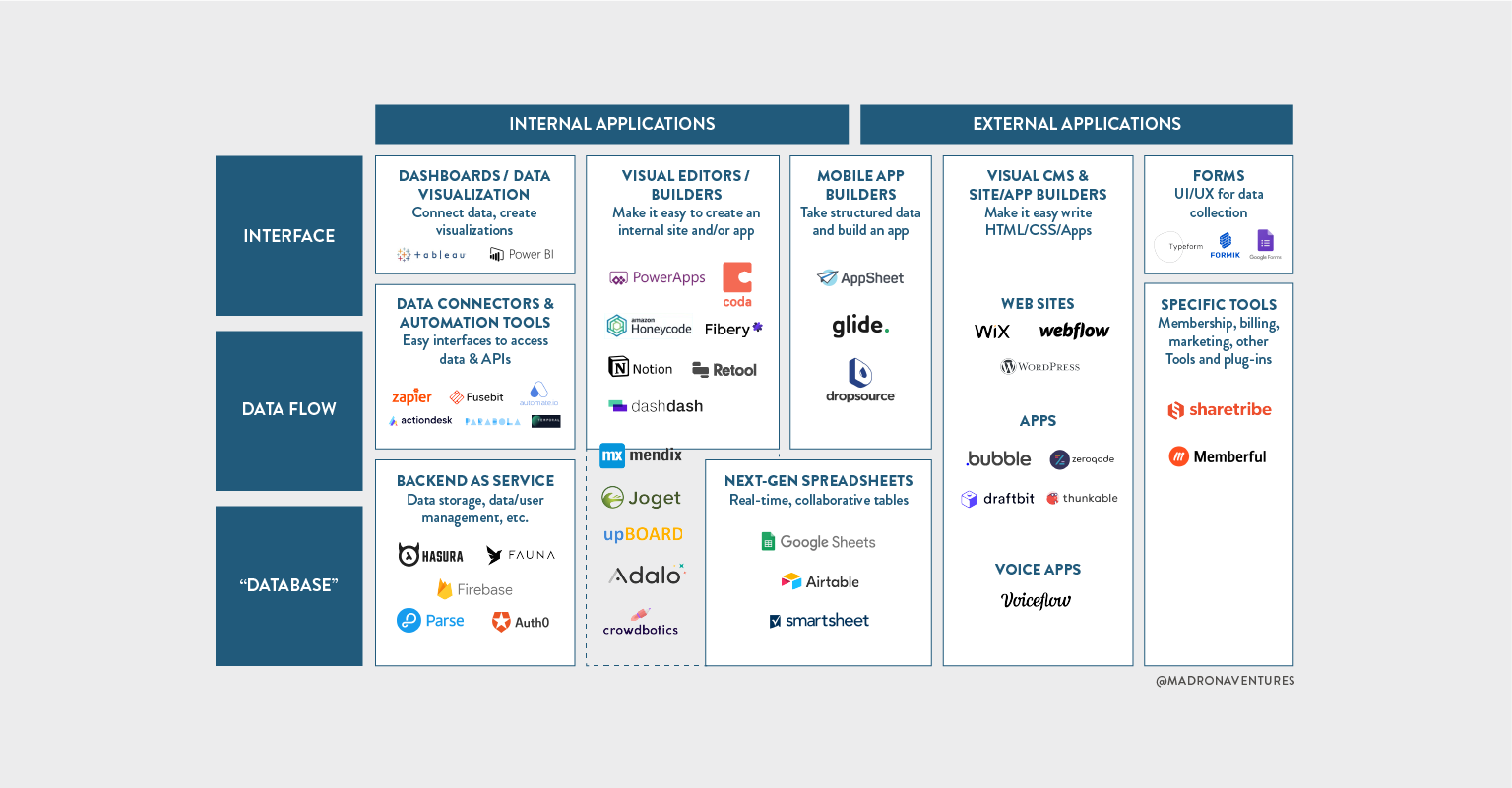Just How No-Code Devices Simplify Open Platform Database Development for Everybody
Just How No-Code Devices Simplify Open Platform Database Development for Everybody
Blog Article
Checking Out the Advantages of Scalable Databases That Call For No Coding Skills for Efficient Information Administration Solutions
The introduction of scalable data sources that eliminate the necessity for coding skills provides a transformative possibility for companies seeking efficient data administration remedies. As we consider the implications of such developments, it ends up being critical to examine how they can reshape the landscape of data administration and drive lasting development in an affordable environment.
Improved Availability for Customers
Boosted accessibility for users is a vital facet of scalable data sources, ensuring that data administration systems are straightforward and instinctive. In a period where data-driven choices are extremely important, accessibility allows a wider series of individuals, consisting of those without considerable technical know-how, to involve with data source systems effectively. This democratization of information access assists in enhanced partnership throughout departments, empowering employees to make and remove understandings informed choices.
Straightforward user interfaces, such as drag-and-drop functions and visual information depiction, simplify intricate data interactions. These improvements minimize the knowing curve associated with typical database management, making it possible for individuals to concentrate on leveraging data rather than facing technical intricacies. Furthermore, scalable data sources commonly incorporate personalized dashboards and real-time analytics, giving individuals with immediate understandings tailored to their certain requirements.

Cost-Effectiveness and Resource Savings
Reliable information monitoring not only depends upon access however also on cost-effectiveness and source cost savings. Scalable databases made for individuals with no coding abilities substantially reduce economic burdens usually related to standard database monitoring systems. By eliminating the demand for specialized programming expertise, organizations can allot their resources extra effectively, concentrating funds on core company tasks instead of considerable training or hiring skilled workers.
In addition, these data sources typically make use of cloud-based options, which better decrease expenses connected to hardware and upkeep. Organizations can scale their data source solutions according to their requirements, preventing the expenditures incurred from over-provisioning resources. This versatility suggests businesses can adapt to transforming demands without sustaining unneeded costs, causing significant long-term cost savings.
In addition, user-friendly user interfaces simplify data entrance and monitoring processes, decreasing the time invested in administrative tasks. This effectiveness converts into labor expense financial savings, permitting teams to concentrate on tactical efforts instead than regular upkeep. On the whole, adopting scalable data sources that need no coding abilities fosters a much more cost-effective technique to information monitoring, making it possible for companies to optimize their sources while keeping high degrees of functional efficiency.
Improved Cooperation Throughout Teams

In addition, scalable databases assist in smooth communication among employee. With user-friendly interfaces that need no coding abilities, staff members can easily create, customize, and share records or control panels tailored to their certain demands. This democratization of data equips non-technical customers to contribute understandings, boosting the collaborative setting.
In addition, these data sources support concurrent access, enabling several customers to deal with the same dataset at the same time. This function improves efficiency, as teams can engage in joint data analysis without the danger of version control problems. The capability to leave remarks or notes straight within the data source better advertises discussion and clarifies information analyses.
Streamlined Information Monitoring Processes
In today's data-driven setting, companies identify the need of structured information monitoring refines to optimize performance and precision. By leveraging scalable databases that require no coding skills, companies can simplify their data handling and reduce the complexities typically associated with traditional data source systems. This availability equips non-technical users to engage straight with data, helping with quicker decision-making and decreasing reliance on specialized IT personnel.
Structured information administration processes enhance workflow by automating regular tasks such as data access, recognition, and reporting. Automated data assimilation makes sure that info from various resources is aggregated flawlessly, removing silos and promoting an unified sight of vital business metrics (no-code). Straightforward user interfaces permit workers to control information conveniently, enabling them to generate understandings that drive strategic campaigns without the requirement for extensive training.
This performance not only speeds our website up functional processes yet likewise decreases the potential for human mistake, making sure that information remains trustworthy and accurate. Eventually, structured information management processes with scalable data sources lead to improved performance, allowing companies to focus on core activities while making certain that their information administration practices are effective and effective.
Scalability for Growing Organizations

For increasing ventures, the capacity to scale up or down is vital. A scalable data source can deal with an influx of information created from brand-new clients, products, or services, making certain that organization procedures remain uninterrupted. other These data sources supply the capability to manage peak lots effectively, which is important throughout periods of rapid development or seasonal spikes.
Additionally, many scalable data source services are designed with straightforward interfaces that require no coding abilities, empowering non-technical team to handle data properly (no-code). This democratization of data management permits organizations to allot resources strategically and lower reliance on specialized IT employees
Eventually, taking on a scalable data source not only improves functional effectiveness yet also cultivates an environment where organizations can evolve and introduce without the constraints of standard database systems. This flexibility positions companies for long-term success in today's competitive landscape.
Verdict
Finally, scalable data sources that require no coding skills give significant benefits for reliable data administration. These systems enhance access for non-technical users, minimize functional costs, and promote partnership throughout groups. By streamlining data monitoring processes and using scalability for growing companies, such remedies enable companies to adjust to changing needs properly. Ultimately, the adoption of these easy to use data sources cultivates technology and positions businesses for long-lasting success in a vibrant atmosphere.
Enhanced accessibility for individuals is an essential facet of scalable data sources, guaranteeing that information management systems are instinctive and straightforward.User-friendly user interfaces, such as drag-and-drop attributes and visual data depiction, simplify complex information interactions. In general, taking on scalable data sources that require no coding abilities promotes a more cost-efficient technique to data monitoring, allowing organizations to optimize their resources while keeping high levels of functional effectiveness.
By leveraging scalable data sources that need no coding skills, businesses can streamline their data handling and lower the complexities typically connected with traditional data source systems - no-code.Streamlined data monitoring processes boost workflow by automating regular tasks such as go to these guys information access, validation, and coverage
Report this page